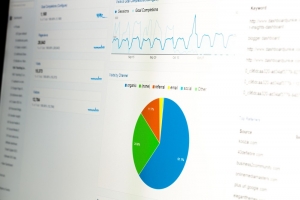Search engine optimization (SEO) can be critically important to your cause/campaign. It requires vigilance and an understanding of your target demographic. It requires a solid foundation made of great content designed to engage your audience. When you need a site migration, it needs a plan!
SEO works as long as all the parts of your digital footprint are fresh and responsive to current trends. SEO migration can become more challenging when there is a shift in your overall message or when the volume of content is high, making it more difficult to manage. This is often the case with larger corporations.
Finding Your SEO Baseline
There’s no way to know if you’ve improved unless you know how you’re currently performing. It’s important to become familiar with traffic source dimensions. Get comfortable with using analytics, whether it’s with Google, Facebook, Twitter, etc.
The kind of information you’re looking for should include:
- Your current search rankings: One of the easiest metrics to find, this is a good place to start collecting baseline data.
- Top Search Traffic Sources: Google, Twitter, and Youtube (for example) will probably cater to unique segments of your target demographic. How will those variables change when new content is introduced? You’ll need some idea of how each of these are performing before a migration.
This may sound obvious, but it’s important enough to bear repeating: This is the core of your feedback loop. It’s the analytics which influences your marketing which in turn, improves your analytics…and so on. It’s a representation of how your content is promoted – especially on social media. It’s not an exaggeration to say that the people who visit your site are part of your marketing team!
Laying the SEO Migration Foundation

- Indexing: Make sure your pages are all properly indexed in major search engines like Google and Bing. Use the change of address function in Google Webmaster tools when moving to a new domain, for example.
- URL Mapping: Make a complete assessment of how all your pages are mapped, accounting for both unchanged pages and new/modified pages.
- Redirecting traffic: Make sure the appropriate redirects are in place so that a bookmarked URL still functions. Use a tool like Link Redirect Trace to check that all your redirects are properly implemented. Also, some pages may be combined, requiring more than one redirect to the same (new) page.
- External links and collaborations: It’s also wise to check external links to make sure they still function. If you’re collaborating with other sites, inform them of your changes. Make them aware of any new content and/or links so they can make changes on their end where needed.
- Metadata: Make a complete assessment of metadata on new/modified pages, making sure context is accurate.
- Page Titles: In the same vein as metadata, there needs to be an account of all page titles, which ones are new and which have been modified. Some will need to be transferred to new pages while others need to be checked to make sure it’s still appropriate for the content that it’s supposed to represent.
Note: After you’ve dedicated time to creating great new content, make sure you haven’t overlooked the obvious. Make sure it has a title!
Additional Considerations
Project Management: Collectively, the information you track can be difficult to handle without accurate records. If you discover that you’re in this situation (and you probably will be), keep a spreadsheet which includes sitemaps, metatags, redirects, analytics and anything else which could change as you move ahead with your migration.
Testing: Having an accurate site map and knowledge of where your redirects are needed, you then need to know that they all work. It can get a bit tedious, and makes a spreadsheet all the more valuable as a verification tool.
Compatibility: After establishing that your sitemap is in order, your meta tags are in place, your redirects are all accounted for, and your site is ready for launch, make sure there are no compatibility issues. This includes how the site appears on multiple browsers. And don’t underestimate the power of mobile compatibility – mobile marketing being the most influential form of online advertising.
This is where a spider simulator can be helpful to ensure that all the content and the page templates can be seen by search engines.
Finally, avoid navigation menus based on JavaScript or Flash, since they may be difficult to read with some search engines.
Continue to monitor your analytics so you know exactly how all that hard work is paying-off. Determine your weaknesses and be sure to make adjustments along the way.
Good luck!






